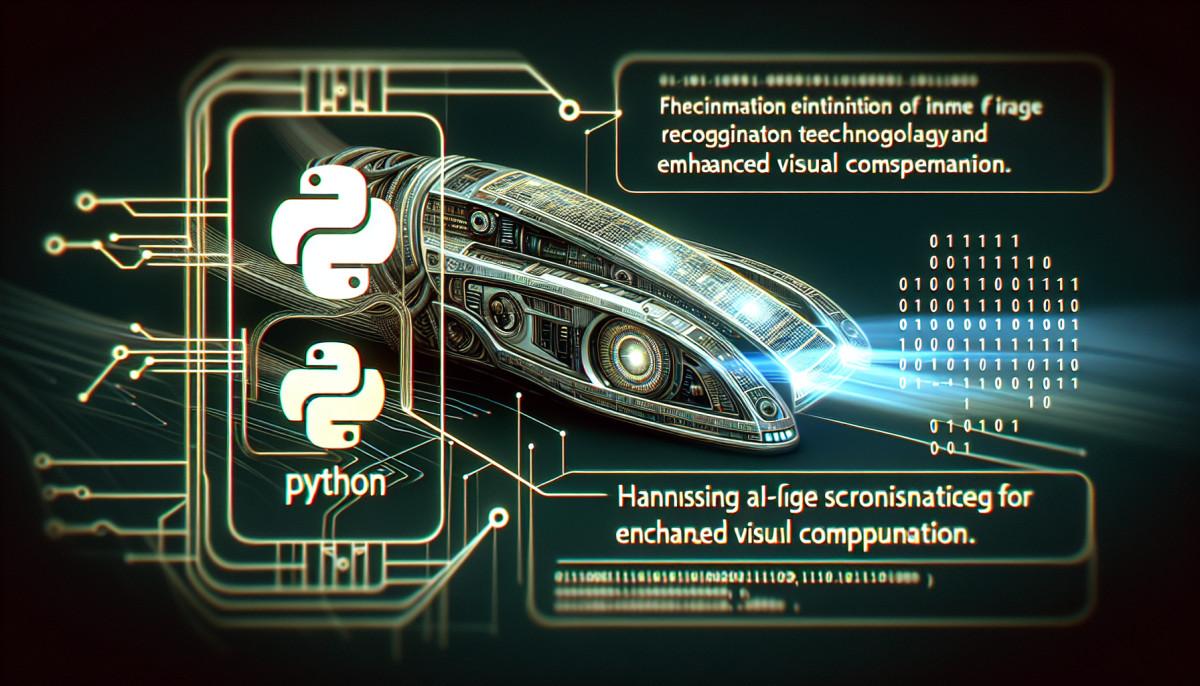

Mar 07, 2024 08:00am
As we plunge into an era defined by artificial intelligence and its countless applications, one particular innovation stands out. OpenAI's image recognition technology, which is truly phenomenal, characterized by its cutting-edge ability to analyze and interpret images more profoundly than ever before. With Python-based AI programming, OpenAI's recent creation, 'gpt-4-vision-preview,' makes it possible to unlock a new level of visual understanding. It's not just about identifying objects in images anymore; it's about learning from those images and gaining unprecedented insights.
Introduction to OpenAI's Image Recognition
Image recognition can be defined as the process of identifying and detecting an object or feature in a digital image or video. Python, one of the most popular programming languages worldwide, is often used in AI programming for image recognition tasks.
Here’s a basic example:
import cv2
# load image
image = cv2.imread('testImage.jpg')
# convert image to grayscale
greyImage = cv2.cvtColor(image, cv2.COLOR_BGR2GRAY)
# apply threshold on the image
_, thresholdImage = cv2.threshold(greyImage, 127, 255, cv2.THRESH_BINARY)
# display the original and threshold images
cv2.imshow('Original Image', image)
cv2.imshow('Threshold Image', thresholdImage)
# wait for a key press and then close the image windows
cv2.waitKey(0)
cv2.destroyAllWindows()
This Python-based code is a simple demonstration of image recognition using the OpenCV library. But when we leverage OpenAI's 'gpt-4-vision-preview' model, we gain an even more robust level of image understanding.
#import the required classes
from openai.api import ImageRecognition
# make an instance of ImageRecognition
image = ImageRecognition()
# read in image content
with open('image.jpg', 'rb') as file:
imageData = file.read()
# use the recognize method to identify what's in the image
result = image.recognize(imageData)
# print the result
print(result)
This ground-breaking model extends beyond the conventional boundaries of object detection and recognition, opening up new dimensions for enhanced visual understanding.
Exploring Challenges and Opportunities
Venturing into uncharted territories often comes with a set of challenges, and it's no different with OpenAI's image recognition model. One of the primary hurdles is managing and processing extensive volumes of visual data, requiring significant computational resources which can lead to resource saturation.
Nonetheless, these challenges don't overshadow the ample opportunities this technology presents. With the 'gpt-4-vision-preview' model's constant evolution and the potential for advanced implementations like dynamic image recognition, there's more to look forward to in AI-enabled visual understanding.
Implementation Across Industries
OpenAI's image recognition capabilities find usage across diverse industries, providing unique insights, enhancing processes, and delivering value through intelligent visual analysis.
- Healthcare
The healthcare sector can leverage the technology for improved diagnostic accuracy and better analysis of medical images (X-rays, MRIs, CT scans).
#import classes needed
from openai.api import ImageRecognition
# creating an instance of the ImageRecognition class
image = ImageRecognition()
# reading a medical image
with open('scan.jpg', 'rb') as file:
imageData = file.read()
# recognizing image using model
result = image.recognize(imageData)
# displaying the result
print(result)
This Python code shows the potential use of this AI technology in analyzing medical images.
- Retail and E-commerce
In the retail sector, image recognition can enhance customer experience with intelligent product suggestions based on visual preferences and increased security measures.
#import necessary classes
from openai.api import ImageRecognition
# make an instance of the ImageRecognition class
product_image = ImageRecognition()
# open product image and read its content
with open('product.jpg', 'rb') as file:
imageData = file.read()
# use the recognize() method to identify what's in the image
result = product_image.recognize(imageData)
# print the result
print(result)
This code illustration shows how the technology could significantly impact the retail and e-commerce sector by understanding and identifying products based on the image provided.
The vast applications and adaptable nature of OpenAI's image recognition capabilities make it an irreplaceable tool across various domains. It's clear that, by optimizing visual understanding through AI, immense progress can be made in redefining processes and fostering growth.
Summing Up
In the grand scheme of AI using Python, OpenAI's image recognition technology presents a promising future. This revolutionary tool not only possesses the potential to redefine how we perceive and interact with visual data, but it also enables us to make remarkable strides towards a future where AI smoothly integrates into every facet of our lives.
As with any great invention, adoption comes with its challenges. However, the potential advantages and opportunities far outweigh these hurdles. It's a new chapter in the history of AI-powered visual understanding; one that is poised to have far-stretching implications across various industries. And Python programming, with its simplicity and versatility, provides an excellent platform to leverage this power.
To round off, I hope this article provides you with an insightful glimpse into OpenAI's image recognition technology and its numerous applications across different domains. For expert help on AI programming using Python or seeking to harness the power of OpenAI's 'gpt-4-vision-preview' in your upcoming projects, consider hiring someone with proven experience. For more information, check out JerTheDev's Services page, where you can access an array of specialized offerings tailored to your needs.